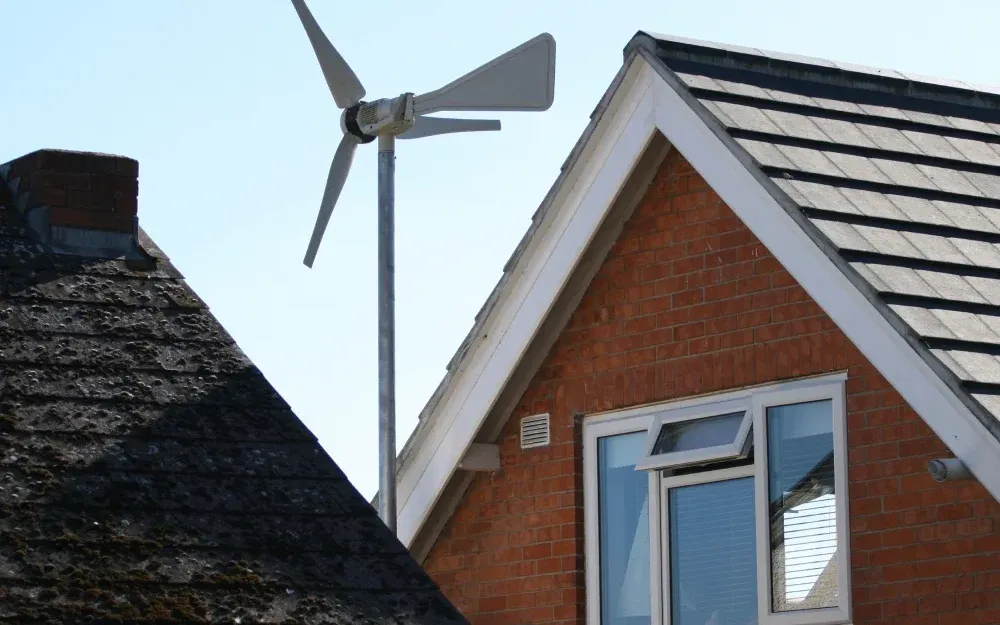Are you picturing rolling hills dotted with massive, three-bladed windmills when you think of wind power? While horizontal axis wind turbines (HAWTs) dominate the landscape, there’s a fascinating alternative gaining traction, the vertical access wind turbine. What makes them different, and why might they be a crucial piece of our clean energy future?
Understanding Vertical Access Wind Turbine Technology
Unlike their horizontal counterparts, vertical access wind turbines, or VAWTs, have their rotor shaft arranged vertically. Imagine an eggbeater spinning in the wind, and you’ll have a basic visual. This fundamental difference in design yields some interesting advantages.
One key benefit is their omnidirectional nature. HAWTs need to be actively steered into the wind using a yaw mechanism. VAWTs, however, accept wind from any direction. This removes the complexity and cost of yaw control, making them simpler and potentially more reliable. Think about it, wouldn’t it be easier to set up a device that doesn’t need constant adjustments?
Furthermore, the generator and gearbox can be located at ground level. This simplifies maintenance and reduces the need for heavy lifting equipment. Imagine the ease of servicing a turbine where you don’t need to climb hundreds of feet in the air! Lower maintenance costs translate to cheaper energy.
There are two primary types of VAWTs, Darrieus and Savonius. Darrieus turbines, with their curved blades, are known for their efficiency at higher wind speeds. Savonius turbines, resembling S-shaped scoops, are better suited for lower wind speeds and have a higher starting torque. Different strokes for different folks, right? Each design has its strengths and weaknesses, making them suitable for different applications and environments.
Benefits and Applications
The advantages of VAWTs extend beyond their design simplicity. Their ability to operate in turbulent winds makes them suitable for urban environments where traditional HAWTs might struggle. Picture a city skyline dotted with VAWTs, silently generating power amidst the hustle and bustle.
Their smaller size and quieter operation also make them more aesthetically pleasing and less disruptive to wildlife. Let’s be honest, some people find the sight of large HAWTs to be an eyesore. VAWTs can blend more seamlessly into the environment.
VAWTs also present opportunities for distributed generation. They can be deployed on rooftops, industrial buildings, or even as part of small, off-grid power systems. This allows communities and businesses to generate their own electricity, reducing their reliance on centralized power grids. What if your home could generate its own power from the wind?
However, VAWT technology isn’t without its challenges. They typically have lower power coefficients compared to HAWTs, meaning they extract less energy from the wind. This has historically limited their application to smaller-scale projects. But ongoing research and development are steadily improving their efficiency.
Additionally, VAWTs can experience structural issues due to cyclic stresses on the blades. Imagine the constant bending and flexing the blades endure as they rotate. Addressing these challenges through advanced materials and innovative designs is crucial for improving their long-term reliability.
The Future of Vertical Access Wind Power
Despite the hurdles, the future looks promising for vertical axis wind turbines. As the demand for clean energy grows, innovative solutions are needed. VAWTs offer a unique set of advantages that could make them a significant player in the renewable energy landscape.
Researchers are actively working on improving the efficiency and durability of VAWTs. Advances in aerodynamics, materials science, and control systems are paving the way for larger, more powerful turbines. What if we could unlock the full potential of VAWT technology?
The potential for VAWTs to contribute to a greener tomorrow is undeniable. Their ability to operate in diverse environments, their lower visual impact, and their suitability for distributed generation make them a compelling alternative to traditional wind power.
Imagine a world powered by a combination of HAWTs and VAWTs, working in harmony to provide clean, reliable energy. This future is within our reach, and VAWT technology is playing an increasingly important role in making it a reality.
